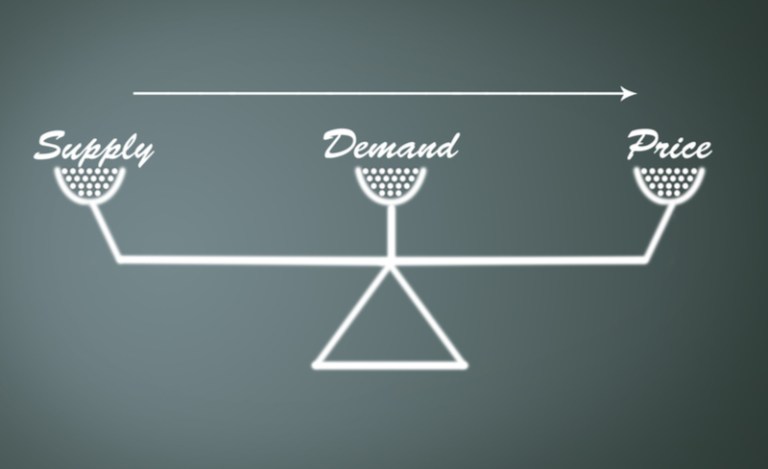Restaurants Reinvent Surge Pricing

Dynamic pricing is not just for Uber and Lyft. One pioneering London restaurateur has brought the pricing strategy into the dining room.
Leonid Shutov, owner and founder of the city’s swanky Bob Bob Ricard restaurant, has decided to tie his menu prices to projected demand — and offer discounted menu items to his diners during off-peak hours, Fortune reported Saturday.
The restaurant, which offers luxuries like a call button for champagne, will lower its prices by 25 percent for off-peak times, such as during Monday lunch, and by 15 percent off mid-peak times, such as during dinner on Tuesdays and Sundays.
During those discounted time periods, the restaurant will be offering the same menu as it does during its full-priced peak times — but at significantly less expensive prices. For example, the lobster macaroni & cheese can be had for £20.50 ($27.70) instead of the usual £26.50.
Shutov said he came up with the idea after seeing the travel industry implement the dynamic pricing strategy. “The idea just came from looking at how the rest of the world functions,” Shutov told Fortune. “Airlines wouldn’t be able to exist, the business model wouldn’t work unless you could balance supply and demand. Everything that we have taken that is widely accepted in the modern economy and applied to restaurants seems to have worked.”
Discount
While Shutov may be one of the first London restauranteurs to offer a menu based on dynamic pricing, he is by no means the first restaurant owner to offer off-peak discounts. For years, restaurants offered “early bird” discounts for diners willing to eat their meals before 6:00 P.M., for example. Tuesday night dinner discounts and lunch buffets are also a part of restaurant pricing history.
In more modern times, food delivery apps have deployed similar strategies. The Gebni app helps restaurants acquire take-out orders during their slow periods with discounts, for example.
It sets dynamic pricing based on an algorithm that reduces the price of menu items according to demand. Discounts change in real time, ranging from a moderate 2 percent to a whopping 35 percent — even on a $10 item.
The app joins a growing space, with the food home delivery market projected to see 79 percent growth by 2022, thanks to growing consumer satisfaction with brands and delivery services alike, according to PYMNTS Mobile Order-Ahead tracker.
For those wishing to dine in, however, Taste Bud offers discounts at 30 restaurants with a similar concept to Gebni. The deals, which are targeted to money-conscious college students living by the University of Texas at Austin, are updated dynamically depending on supply and demand.
With the app, the restaurant sets the highest and lowest prices it’s willing to charge. Then the app offers customers prices based on certain factors, including the time of day and supply and demand.
Once the user accepts an offer, the app locks the price in place and creates a coupon that the user can redeem at the restaurant. For the use of its service, Taste Bud takes a cut of the offer.
Reservations
But not all restaurants and online services for the industry are using dynamic pricing to offer discounts to diners. Some, like OpenTable, have taken the opposite tack and used demand to charge higher prices.
In 2015, they began charging a premium for customers looking to snag a table on a popular night. Through the “Premium Reservations” option, customers could pay upwards of $50 for a table of two and $100 for a table of four to book a guaranteed reservation on Friday and Saturday nights.
According to OpenTable, the move was aimed at helping customers make last-minute dinner bookings without worrying about missing out on a favorite restaurant or occasion. But the popular reservation service for high-end restaurants does offer dining establishments a way to fill empty seats at off-peak times, even though it doesn’t offer a direct discount to consumers.
Through the POP Marketing 1,000 Point Program, restaurateurs choose reservation days and times — presumably the slowest periods — they would like to entice diners to book, and OpenTable offers the diners 1,000 dining points to book these POP times.
Now Playing: Surge Pricing
With restaurants adopting dynamic pricing (and surge pricing) strategies, which subset of the hospitality and entertainment industries will be next to follow this strategy? Perhaps the movies.
Regal Cinemas, one of the largest operators of theaters in the United States, said it would experiment with dynamic pricing for its movie tickets by charging less during off-peak times and more during busy periods, CNN reported in 2017.
So, in the future, maybe savvy consumers will hit Shutov’s restaurant or order take out for Gebni at a discount before heading to an early matinee at the cinema.